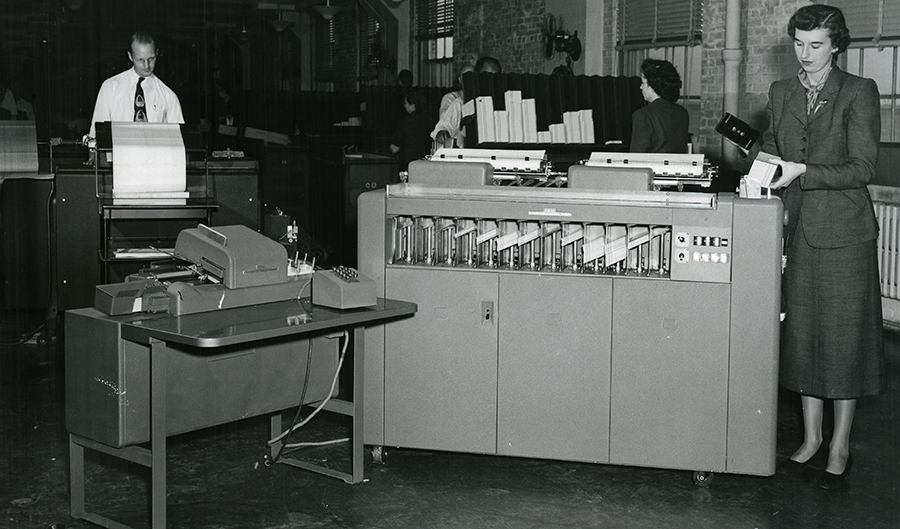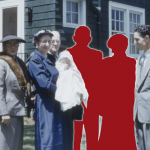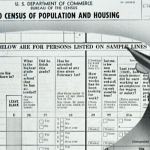What do John F. Kennedy, Aretha Franklin, Chuck Norris, and Bill Russell have in common?
They can all be found in the 1950 US census, newly released by the US National Archives and Records Administration. The exciting challenge is finding them in the hundreds of thousands of digital images online, which will be difficult until a complete and accurate searchable record is available.
Unless you know the state, county, and street address where they lived in 1950, locating family members without an accurate name index will be daunting. Fortunately, a dedicated army of online volunteers is tackling that challenge through a community effort hosted by FamilySearch, a nonprofit organization dedicated to helping each of us find our ancestors.
Will you consider the 1950 US Census Community Project when choosing your next service activity?
Supported by genealogy giants Ancestry and FamilySearch International, local and national genealogy and historical societies, and many other deeply committed organizations, this project is rallying hundreds of thousands of volunteers to publish a high-quality, searchable online index of every single name found in the 1950 census. But this grassroots approach is hardly new—volunteers also indexed every census from 1790 to 1940.
This time, rather than starting from scratch, volunteers will review Ancestry’s computer-generated index using groundbreaking handwriting recognition and cutting-edge artificial intelligence technologies. So that no one slips between the digital cracks, this comprehensive human review of the automated index will verify that the data is accurate and complete. Volunteers can visit https://www.familysearch.org/1950census to review their own family’s information and then review other records to refine the index before publication.
Once the census index is reviewed, researchers, family historians, and anyone else curious about their own family’s story will be thrilled to dig in. “Almost all of us are familiar with the recently completed 2020 census, but its most interesting details will be hidden in the dark until the privacy rights expire in 2072,” said David Rencher, Chief Genealogy Officer for FamilySearch. “That’s why the 1950 US census is so exciting,” Rencher added. “The wait is over.”
Finding our parents, grandparents, or even aunts and uncles in the records is the key to unlocking their stories, and the deployment of these new technologies will simplify the process of refining the index and allow even more people to participate.
“Once you’ve discovered someone in the 1950 census, you can use that information to find that person’s parents in the 1940 US census index, which is already published on multiple websites. You can then continue with 1930, 1920, and so on. You can even dive all the way back to the very first census taken in 1790. Right from your own computer or other device, you’ve traced your heritage back a century or more. Imagine uncovering information that shows your family’s roots are as old as America,” Rencher said.
Can you imagine the ever-popular Chuck Norris as a 10-year-old? Wonder if he was already preparing for his tough-guy persona? Carlos Ray “Chuck” Norris first appeared in the 1940 census about 3 weeks after his birth. Or how about Boston Celtics great Bill Russell? He would have been 16 years old in 1950, just 6 years before being drafted as the number 2 pick in the NBA. Then there’s the “Queen of Soul” Aretha Franklin, who would turn 8 that year. She may have already begun singing gospel at New Bethel Baptist Church in Detroit, Michigan, but she wouldn’t leave home to pursue her career in music for another decade.
Other records suggest that Karen Carpenter, Julius Irving, William Hurt, and Cybill Shepherd should be included as babies born in 1950 prior to the census. The latest census also includes 14 people who were or have since become the President of the United States.
Consider the treasure trove: The 1950 census provides a snapshot of more than 150 million people living in the United States at the time. In addition to name, age, gender, race, education, and place of birth, census takers also asked individuals for their level of education, occupation, and income. This historic census comes a few years after America had returned to work following World War II and just months before America would enter the Korean War. Many people in the 1950 census had lived through the flu pandemic of 1918, World War I, the Great Depression, and World War II. They had witnessed the birth of radio and television, as well as the devastation of the atomic bomb.
Together with the earlier census indexes (1790 to 1940) already available online, it will soon be easier than ever for family historians to extend their genealogical trees well beyond their memories. Over the next decade, the 1950 US census index will easily become the most searched online database—what a gift to the explosive consumer interest in genealogy.
For more information and to participate, go to FamilySearch.org/1950census. You’ll soon be a valuable contributor to this exciting national service project.





